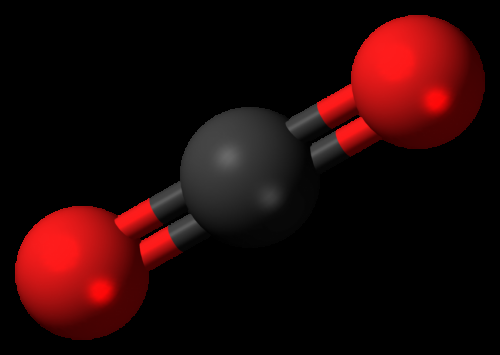January 7, 2016 report
A better electrocatalyst for converting carbon dioxide into liquid fuel

(Phys.org)—A team of researchers working at the University of Science and Technology of China has developed a new and potentially better electrocatalyst for use in converting carbon dioxide into methanoic acid, which could be used as a liquid fuel. In their paper published in the journal Nature, the team describes their new process and suggests that it may provide a path to reducing carbon dioxide emissions and thus help to slow global warming.
As the planet continues to warm due in large part to carbon dioxide emissions from coal fired power plants, researchers around the world are working furiously to find a way to pull out the carbon dioxide from emissions before they are allowed to pass into the atmosphere, and to use them in some other way—one that is economically feasible. Many would like to see the carbon dioxide converted to something useful, such as a type of fuel that could be burned and used as a clean power source—that would make the process far more financially palatable. But thus far, such efforts and have not panned out, due to the huge costs involved.
To convert carbon dioxide to something potentially useful currently requires subjecting it to electricity and a catalyst, a process known as electroreduction, but finding the right catalyst has been problematic, though progress has recently been made by using oxide derived nanostructures. In this new effort, the researchers tried a new approach, a four-atom thick layer of either mixed or pure cobalt and cobalt oxide. They found that the cobalt, which is not normally catalytically active for carbon dioxide, became active when arranged in a certain oxidized state.
In testing their catalyst, the team found it able convert carbon dioxide to methanoic acid and that it provided better catalytic activity than other known metal or metal oxides. They are not suggesting, however, that their technique could be used in power plants right now, more that they believe they have opened the door to the idea of using metal based carbon dioxide electroreduction catalysts as a possibility for doing so. If their expectations pan out, it could mean coal fired powers plants could finally be on the path towards less harmful emissions.
More information: Partially oxidized atomic cobalt layers for carbon dioxide electroreduction to liquid fuel, Nature 529, 68–71 (07 January 2016) DOI: 10.1038/nature16455
Electroreduction of CO2 into useful fuels, especially if driven by renewable energy, represents a potentially 'clean' strategy for replacing fossil feedstocks and dealing with increasing CO2 emissions and their adverse effects on climate. The critical bottleneck lies in activating CO2 into the CO2− radical anion or other intermediates that can be converted further, as the activation usually requires impractically high overpotentials. Recently, electrocatalysts based on oxide-derived metal nanostructures have been shown to enable CO2 reduction at low overpotentials. However, it remains unclear how the electrocatalytic activity of these metals is influenced by their native oxides, mainly because microstructural features such as interfaces and defects influence CO2 reduction activity yet are difficult to control. To evaluate the role of the two different catalytic sites, here we fabricate two kinds of four-atom-thick layers: pure cobalt metal, and co-existing domains of cobalt metal and cobalt oxide. Cobalt mainly produces formate (HCOO−) during CO2 electroreduction; we find that surface cobalt atoms of the atomically thin layers have higher intrinsic activity and selectivity towards formate production, at lower overpotentials, than do surface cobalt atoms on bulk samples. Partial oxidation of the atomic layers further increases their intrinsic activity, allowing us to realize stable current densities of about 10 milliamperes per square centimetre over 40 hours, with approximately 90 per cent formate selectivity at an overpotential of only 0.24 volts, which outperforms previously reported metal or metal oxide electrodes evaluated under comparable conditions. The correct morphology and oxidation state can thus transform a material from one considered nearly non-catalytic for the CO2 electroreduction reaction into an active catalyst. These findings point to new opportunities for manipulating and improving the CO2 electroreduction properties of metal systems, especially once the influence of both the atomic-scale structure and the presence of oxide are mechanistically better understood.
Journal information: Nature
© 2016 Phys.org




















